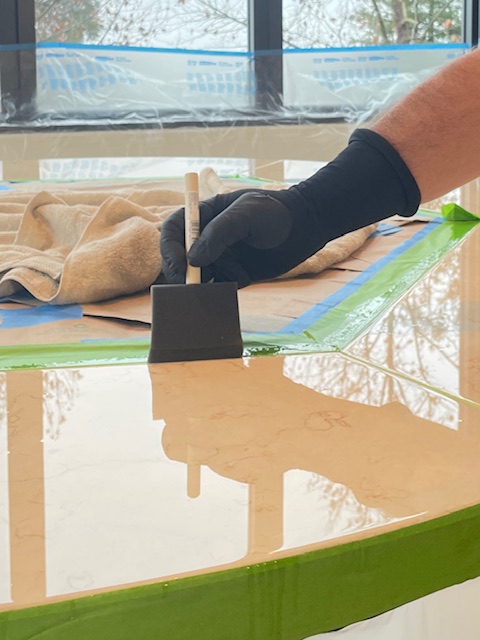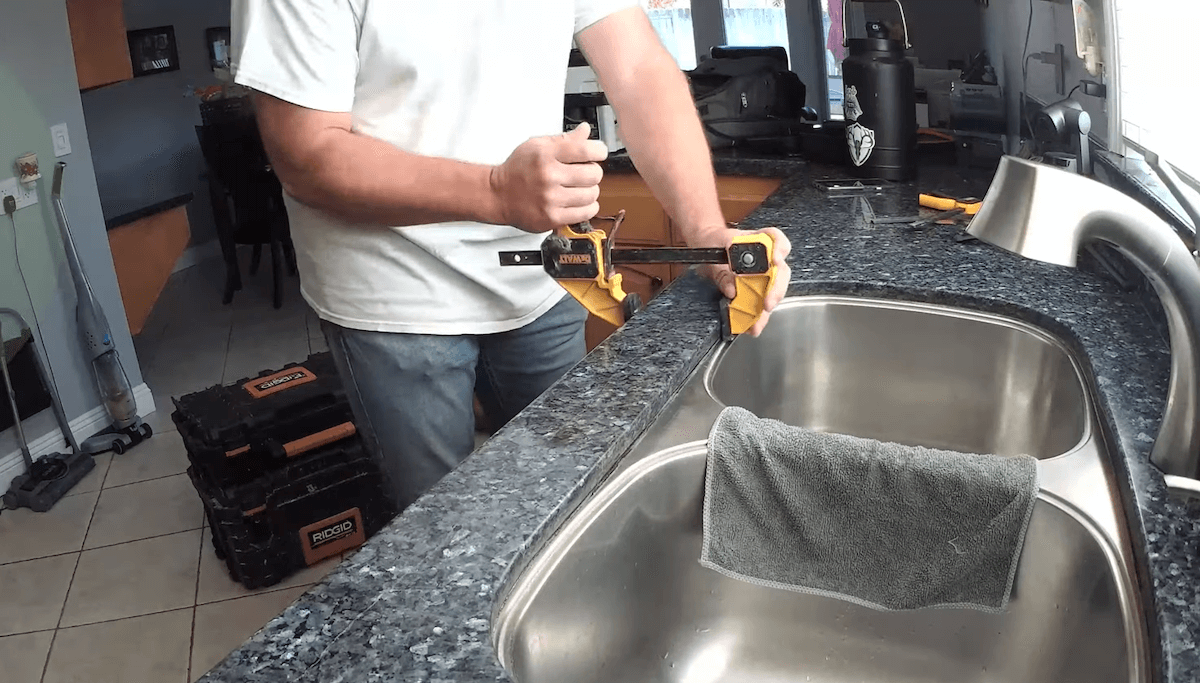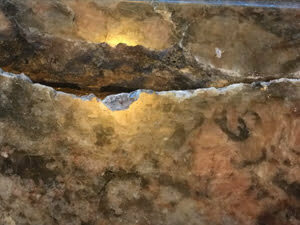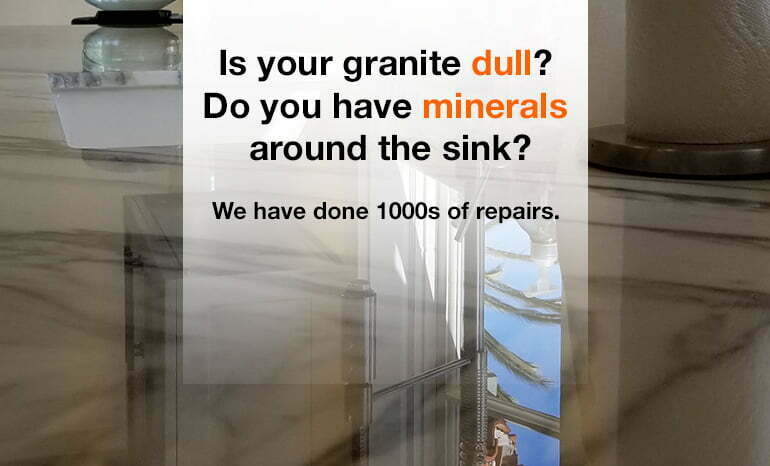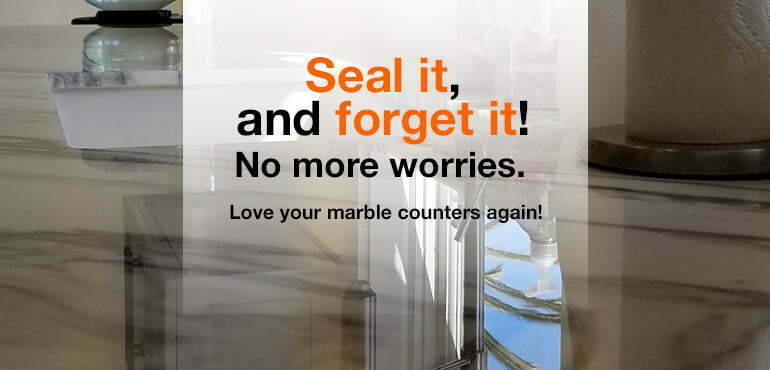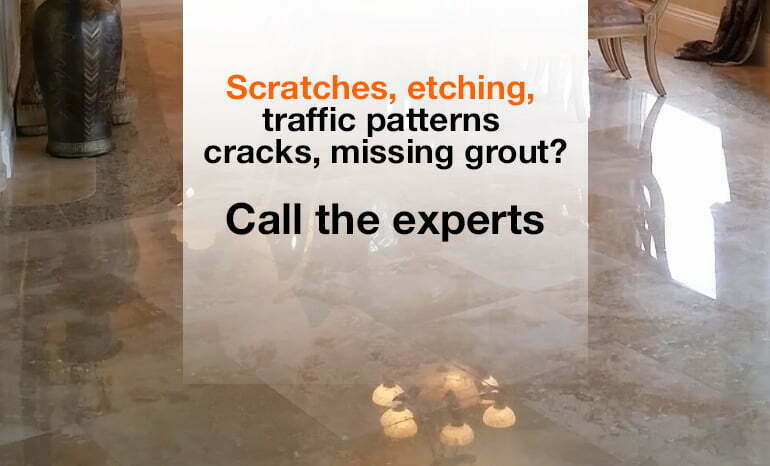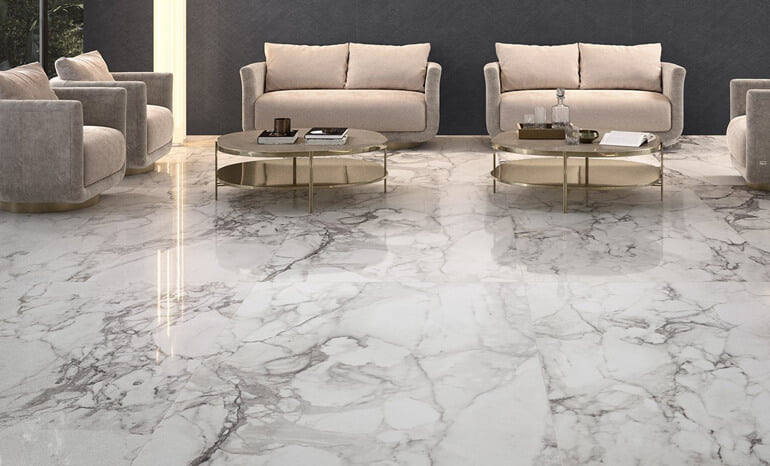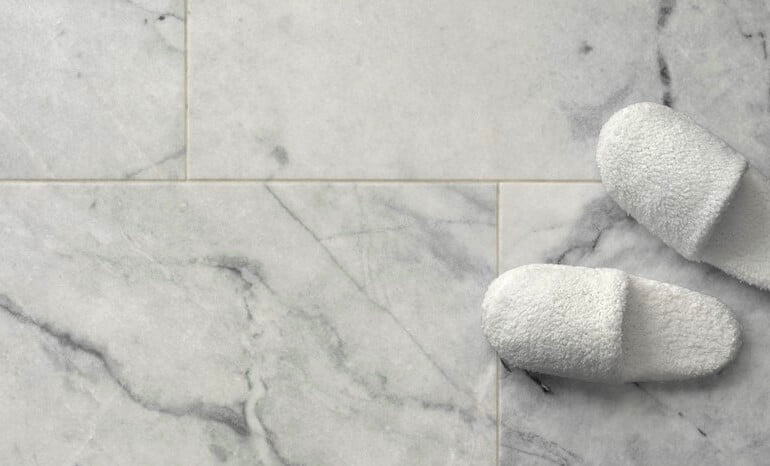Natural stone, with its undeniable charm and durability, has become a mainstay in homes across the globe. Its timeless appeal makes it a favored choice among homeowners who are looking for quality materials that combine aesthetic appeal with longevity. However, despite its many advantages, natural stone is not without its issues. Understanding the potential problems associated with natural stone can help homeowners make informed decisions about its use in their homes.
Understanding Natural Stone’s Porosity
One of the primary concerns with natural stone is its porosity. Stones like limestone and sandstone are highly porous, meaning they can absorb liquids easily. This can lead to staining and water damage over time, especially if the stone is not properly sealed. Sealing these stones is crucial to prevent absorption of spills and protect the stone’s surface from stains. However, even sealed surfaces can be vulnerable to harsh chemicals and acidic substances, which can etch the stone and leave permanent marks. It’s important to research beforehand which substances will not damage your stone, as the correct cleaning supplies vary.
Wear and Tear on Natural Stone
Natural stone, while celebrated for its aesthetic appeal and durability, is not impervious to the rigors of everyday life. Over time, wear and tear can gradually diminish the stone’s beauty, particularly in high-traffic areas of the home. Marble, known for its softness compared to other stones, is especially susceptible to scratches, etching from acidic substances, and dulling of its polished surface. Granite, though tougher and more resistant to physical damage, can still suffer from chips and cracks if subjected to heavy impacts or improperly installed. Foot traffic, spills, and even the drag of chairs or appliances can leave their mark.
To mitigate these effects, homeowners are advised to implement protective measures such as using mats or rugs in high-traffic zones, opting for coasters and trivets to prevent stains and heat damage, and choosing finishes that are more forgiving of daily wear. Regular maintenance, including cleaning with appropriate products and periodic resealing, plays a crucial role in preserving the stone’s integrity and appearance over time. Ultimately, understanding and respecting the natural vulnerabilities of stone surfaces can help extend their lifespan, ensuring they remain a cherished part of the home’s decor.
Addressing Scratches and Environmental Damage
Addressing scratches and environmental damage on natural stone surfaces requires a proactive and informed approach to maintenance and care. Scratches, a common issue for softer stones like marble, can detract from the natural beauty of the stone. Meanwhile, environmental factors such as UV exposure and extreme weather conditions pose risks to all types of natural stone, potentially leading to fading, discoloration, and physical deterioration over time.
Tackling Scratches on Natural Stone
Scratches can occur from everyday activities, such as sliding dishes across a marble countertop or walking on a slate floor with gritty footwear. For minor scratches, homeowners can often perform DIY remedies, such as gently buffing the area with a fine-grade steel wool or using a stone-specific polishing powder. These methods can minimize the appearance of scratches, restoring the smoothness and sheen of the stone surface. However, deeper scratches may require professional refinishing or grinding to even out the stone’s surface and eliminate the imperfections.
Protecting Stone from Environmental Damage
Natural stone’s exposure to environmental elements can lead to various forms of damage. UV radiation from direct sunlight can fade or alter the color of certain stones, such as the rich hues of some varieties of quartzite and sandstone. To mitigate UV damage, it’s advisable to use window treatments or UV-protective sealants, especially in areas where stone surfaces receive prolonged sun exposure.
Extreme weather conditions, including freeze-thaw cycles, can cause cracking and splitting in stones not suited for outdoor use. Choosing stone types that are appropriate for the local climate and ensuring proper installation and drainage can help prevent weather-related damage. For outdoor stone installations, applying a penetrating sealer can provide an additional layer of protection against moisture absorption and subsequent freeze-thaw damage.
Regular Maintenance for Long-Term Preservation
The key to addressing scratches and environmental damage lies in regular, attentive care. Regular cleaning with pH-neutral cleaners, prompt spill cleanup to prevent staining and etching, and periodic resealing of the stone surface can all contribute to the longevity and beauty of natural stone. For homeowners, understanding the specific vulnerabilities of their chosen stone type and adopting a tailored maintenance routine can significantly impact the stone’s resilience to wear, tear, and environmental factors.
While natural stone brings timeless beauty and character to any space, it also requires a commitment to proper care and maintenance. By addressing scratches promptly, protecting stone surfaces from environmental damage, and adhering to a regular maintenance schedule, homeowners can enjoy the natural elegance of stone for years to come.
Cracking, Chipping, and Color Fading
Cracking, chipping, and color fading are common concerns for homeowners who have invested in natural stone surfaces. These issues not only affect the aesthetic appeal of the stone but can also compromise its structural integrity if not addressed properly. Understanding the causes and solutions for these problems is essential for maintaining the beauty and longevity of natural stone in your home.
Preventing Physical Damage
Cracking and chipping can occur in natural stone for several reasons, including physical impact, structural stress, and improper installation. High-traffic areas are particularly vulnerable to such damage, especially if the stone is not correctly sealed or if it has natural weak points.
To minimize the risk of cracking and chipping, ensure that the stone is professionally installed with appropriate support for its weight and usage. Using mats or rugs in high-traffic areas can also help reduce the impact on the stone surface. For countertops, avoid placing heavy objects near edges where chipping is more likely to occur. If cracks or chips do happen, a professional can often repair them using color-matched epoxy or resin, restoring the stone’s appearance.
Color Fading: Protecting Against Environmental Factors
Color fading in natural stone can be caused by prolonged exposure to sunlight, harsh weather conditions, and the use of inappropriate cleaning products. UV radiation is a common culprit for fading, especially in stones with vibrant colors or delicate patterns.
To protect against color fading, consider installing UV-blocking window treatments in areas where stone surfaces receive direct sunlight. For outdoor installations, choosing stone types that are naturally resistant to UV radiation and applying sealants with UV protection can help maintain the stone’s color. Additionally, using pH-neutral cleaners and avoiding harsh chemicals will prevent discoloration and maintain the stone’s natural beauty.
Regular Maintenance for Color Preservation
Regular sealing is crucial for preventing moisture absorption, which can lead to cracking, chipping, and color changes. Sealants not only protect the stone from staining but can also enhance color depth, giving faded stone a rejuvenated appearance. It’s important to select a sealant appropriate for the specific type of stone and its location, whether indoors or outdoors.
By understanding the causes of cracking, chipping, and color fading, homeowners can take proactive steps to protect their natural stone surfaces. Regular maintenance, including proper cleaning, sealing, and protecting stone from physical and environmental damage, will help ensure that natural stone remains a durable and beautiful feature in your home for years to come.
Maintenance and Cleaning
Natural stone requires specific care to maintain its beauty. Incorrect cleaning methods and the use of inappropriate cleaning products can damage the stone’s surface. Acidic cleaners, for example, can etch marble and limestone. Regular cleaning with pH-neutral cleaners and soft cloths can help preserve the stone’s finish. Additionally, periodic sealing is recommended to protect the stone from stains and water damage.
Maintaining and cleaning natural stone surfaces properly is essential to preserve their beauty and longevity, especially in areas like kitchens that are prone to spills and stains. Each type of natural stone has its own specific care requirements, based on its porosity and hardness. Using the right cleaning materials and techniques can prevent damage and keep your stone surfaces looking pristine.
Granite
Granite is known for its durability and resistance to scratches, making it a popular choice for kitchen countertops. To clean granite, use a soft cloth or sponge with warm water and a mild dish soap. Avoid acidic or abrasive cleaners, which can etch the surface. For stubborn stains, a paste made from baking soda and water can be gently applied. Sealing granite annually can also help protect it from stains.
Marble
Marble’s elegance is unmatched, but it requires careful maintenance due to its porosity. For daily cleaning, use a soft cloth and a pH-neutral cleaner designed specifically for marble. Acidic substances like vinegar and lemon juice can cause etching, so spills should be wiped up immediately. For tough stains, a poultice made from baking soda and water may be used. Marble should be sealed periodically to enhance its resistance to staining.
Quartzite
Quartzite offers the look of marble with increased durability, but it still requires proper care. Clean quartzite using a soft cloth and mild detergent, avoiding harsh chemicals. Though quartzite is resistant to etching and staining, sealing it annually can provide additional protection, especially against oil-based stains which can penetrate more easily than water-based spills.
Limestone
Limestone adds a warm, natural look but is softer and more porous than granite. Clean limestone surfaces with a soft cloth and a gentle cleaner, avoiding acidic products that can wear away the stone. Spills should be cleaned immediately to prevent staining. Limestone benefits from regular sealing to protect its surface from stains and etching.
Slate
Slate’s natural texture and durability make it a great choice for floors and countertops. To clean slate, use a mild detergent and warm water, applying with a soft mop or cloth. Avoid oil-based cleaners, which can leave a residue. Slate’s natural resistance to staining makes it easier to maintain, though sealing can enhance its color and provide a slight sheen.
Soapstone
Soapstone is non-porous and resistant to stains and bacteria, making it a great option for kitchen countertops. Regular cleaning can be done with soap and water. Unlike other natural stones, soapstone does not require sealing. However, mineral oil can be applied to even out the color and enhance its natural veining.
Tips for All Natural Stone Surfaces
- Use Coasters and Trivets: Protect your stone surfaces from heat and moisture by using coasters under glasses and trivets under hot dishes.
- Avoid Abrasive Scrubbers: Always use soft cloths or sponges to prevent scratches.
- Clean Spills Promptly: Immediate cleanup helps prevent staining and etching, especially on softer stones like marble and limestone.
- Regular Sealing: Depending on the stone, sealing every 6 to 12 months can help protect against stains and make cleaning easier.
By understanding the specific needs of each type of natural stone, homeowners can ensure their stone surfaces remain a beautiful and durable part of their homes. Regular, gentle cleaning and appropriate sealing are key to maintaining the natural beauty and integrity of these surfaces.
The Cost of Natural Stone
The allure of natural stone in home design is undeniable, yet the cost can be a significant factor for homeowners. The price of natural stone varies widely depending on several factors, including the type of stone, its origin, rarity, and the complexity of installation. For instance, exotic marbles and high-grade granites often come with a higher price tag due to their unique patterns and limited availability. Conversely, more common stones like slate and limestone may be more affordable, yet still offer the durability and beauty sought after in natural stone applications.
Installation costs can also vary, influenced by the stone’s weight, the difficulty of the cut, and the intricacy of the design. For kitchens, bathrooms, and flooring, where precision and expertise are crucial, professional installation is recommended, further influencing the overall cost.
Investing in natural stone, however, isn’t just about the initial expenditure. It’s also about value over time. Natural stone surfaces can significantly increase a home’s resale value, offering a return on investment through both aesthetic appeal and longevity. Additionally, with proper care, natural stone can last a lifetime, reducing the need for costly replacements compared to other materials. Compared to Solar Panels or Back Patios (other common renovation choices), adding natural stone is often revered as a classic and higher-return investment for the home long-term.
Sustainability and Ethical Sourcing
Sustainability and ethical sourcing have become increasingly important considerations in the use of natural stone. The extraction and processing of natural stone can have significant environmental impacts, including habitat destruction, water use, and carbon emissions. However, the natural stone industry has made strides in adopting more sustainable practices, such as quarry rehabilitation, recycling water used in stone processing, and using less energy-intensive techniques.
Ethical sourcing is also a critical aspect, ensuring that the stone is extracted and processed under fair labor conditions and in ways that do not exploit workers or communities. Many suppliers now provide information on the origins of their stone, and certifications such as the Ethical Trading Initiative (ETI) help consumers make informed choices about the products they purchase.
From a sustainability perspective, natural stone offers several advantages. It’s durable and long-lasting, reducing the need for frequent replacements. Stone can also be repurposed or recycled at the end of its life, contributing to a circular economy. Moreover, natural stone’s thermal mass can improve energy efficiency in buildings, helping to regulate indoor temperatures and reduce reliance on heating and cooling systems.
For homeowners committed to sustainable and ethically sourced materials, natural stone can be a viable option. By choosing suppliers who prioritize these values and by considering the full lifecycle impact of their design choices, individuals can contribute to a more sustainable and responsible use of natural resources in home design.
Conclusion
Natural stone, while beautiful and durable, comes with its set of challenges. From porosity and susceptibility to wear and tear, to the need for regular maintenance and ethical sourcing considerations, homeowners must be prepared to address these issues. By making informed choices about the types of stone used, and by committing to proper care and maintenance, homeowners can enjoy the beauty of natural stone in their homes for years to come. The key is to balance the aesthetic appeal and practicality of natural stone with the realities of its upkeep, ensuring that the material remains a valued part of the home’s design.
FAQ
Is vinegar safe on natural stone?
No, vinegar is not safe to use on natural stone. Vinegar is acidic, and using it on natural stone surfaces like marble, limestone, or granite can cause etching or dull the finish. Instead of vinegar, it’s better to use cleaners specifically designed for natural stone to keep your surfaces looking their best without damage.
What is the best cleaner for natural stone?
The best cleaner for natural stone is a pH-neutral cleaner that’s specifically formulated for use on natural stone surfaces. These cleaners are gentle enough not to damage the stone but effective at cleaning. Always avoid acidic or abrasive cleaners, as they can harm the stone's surface. For daily cleaning, warm water and a soft cloth can often do the trick, but for deeper cleaning, look for a natural stone cleaner at your local home improvement store.
Can you use Dawn to clean natural stone?
Yes, you can use Dawn or any mild dish soap diluted in water to clean natural stone surfaces. Dish soap is gentle and won’t harm the stone if used in moderation. Mix a few drops of the soap in a bucket of warm water, use a soft cloth or mop to clean the surface, and then rinse with clean water to remove any soap residue. It’s an effective and safe method for routine cleaning of natural stone countertops and floors.
What causes efflorescence on stone?
Efflorescence happens when water moves through natural stone, bringing salts to the surface. When the water evaporates, it leaves behind a white, powdery residue that's the salt. This often occurs in new installations or in areas where the stone is exposed to a lot of moisture. It's a natural process that can happen with any porous material, including natural stone.
Should I worry about efflorescence?
Efflorescence itself isn't harmful to the stone and doesn't mean your stone is damaged. However, it can be a sign that there's a lot of moisture coming into contact with the stone, which could lead to other issues like mold or mildew if left unchecked. So, while efflorescence is mostly a cosmetic issue, it's a good idea to keep an eye on moisture levels around your stone to prevent potential problems.
How do I get rid of efflorescence on natural stone?
To remove efflorescence, start by brushing off the loose salt with a soft, dry brush. Often, this is enough to clean it off. For stubborn efflorescence, you can use a mild, diluted vinegar solution (for stones that aren't sensitive to acid like granite) or a specialized stone cleaner recommended for your type of stone. Always test any cleaner on a small, inconspicuous area first to make sure it doesn't damage the stone. After cleaning, rinse the area with clean water and dry it thoroughly. To prevent future efflorescence, ensure proper sealing of the stone and manage moisture exposure.
Does sealing stone prevent efflorescence?
Sealing stone can help prevent efflorescence, but it might not stop it completely. Sealing blocks pores in the stone, reducing water absorption, which means less water moves through the stone to carry salts to the surface. While it's a good preventive measure, if water finds another way through cracks or unsealed areas, efflorescence can still occur. So, sealing helps, but managing water exposure is also key.
How often does natural stone need to be sealed?
Natural stone typically needs to be sealed once a year, but it can vary. Some stones that are more porous, like limestone or sandstone, might need it more often, especially in high-traffic or wet areas. Dense stones like granite might not need sealing as frequently. The best approach is to follow the recommendations for your specific type of stone and the sealer product's instructions.
How do you know if natural stone is sealed?
To check if natural stone is sealed, you can do a simple water test. Just sprinkle a few drops of water on the stone's surface. If the water beads up and stays on the surface, the stone is sealed. If the water absorbs into the stone, making it darker, then it's time to reseal. This test helps you know when it's time to apply a new coat of sealer to keep your stone protected.
Does limestone stain easily?
Yes, limestone does stain easily compared to some other natural stones. This is because limestone is quite porous, meaning it has many tiny holes that can absorb liquids quickly. If something spills on limestone and isn't cleaned up right away, it can soak into the stone and cause a stain. That's why it's important to seal limestone surfaces and clean up spills as soon as they happen.
How do you remove brown stains from limestone?
To remove brown stains from limestone, you can make a poultice. A poultice is a paste that draws out the stain from the stone. For brown stains, which are often organic (like from leaves, coffee, or wine), you can use a mixture of hydrogen peroxide and a little bit of baking soda. Spread the paste over the stain, cover it with plastic wrap, and tape down the edges. Leave it for 24 to 48 hours, then remove and rinse with water. If the stain is stubborn, you may need to repeat the process.
How do you revive natural stone?
Reviving natural stone and bringing back its shine involves a few steps: 1. Clean the Stone: Start by cleaning the stone thoroughly with a pH-neutral cleaner designed for natural stone. Avoid acidic or abrasive cleaners. 2. Repair Any Damage: If there are scratches or etches, these might need to be professionally polished out, especially on softer stones like marble or limestone. 3. Seal the Stone: Applying a sealer can protect the stone from stains and make it easier to clean. Choose a sealer appropriate for the type of stone you have. 4. Polish for Shine: For stones like granite or marble, you can use a stone polish to enhance the shine after sealing. Be sure to follow the product instructions for the best results. These steps can help restore the natural beauty of stone surfaces, making them look fresh and vibrant again.
Does sealing natural stone make it darker?
Sealing natural stone might slightly enhance the color, making it appear a bit darker or richer, but it doesn't dramatically change the stone's natural color. The effect is similar to how wet stone looks darker than dry stone. This slight enhancement can actually bring out the beauty of the stone's patterns and colors. However, the change is usually subtle, and the main purpose of sealing is to protect the stone from stains and damage, not to alter its color.
What causes natural stone to crack?
Natural stone can crack for several reasons: Pressure or Stress: If there's too much weight on the stone or it's not evenly supported, it can crack. Temperature Changes: Rapid or extreme changes in temperature can cause the stone to expand and contract, leading to cracks. Impact: Dropping something heavy on the stone or a sharp impact can cause it to crack. Natural Flaws: Sometimes, natural flaws within the stone, like veins or voids, can make it more prone to cracking under pressure or stress. Understanding these causes can help in taking preventive measures, such as proper installation, careful handling, and regular maintenance.
What is the difference between a stone fissure and a crack?
A fissure and a crack might look similar, but they're different: Fissures are natural features of the stone. They're formed during the stone's creation in the earth, as minerals settle and bind together. Fissures are part of the stone's natural pattern and don't indicate any damage. Cracks, on the other hand, are not natural. They occur after the stone has been quarried and installed, usually because of stress, impact, or environmental factors. Cracks can be a sign of damage or structural issues that might need repair. Knowing the difference can help homeowners understand their stone surfaces better and address any potential issues correctly.
